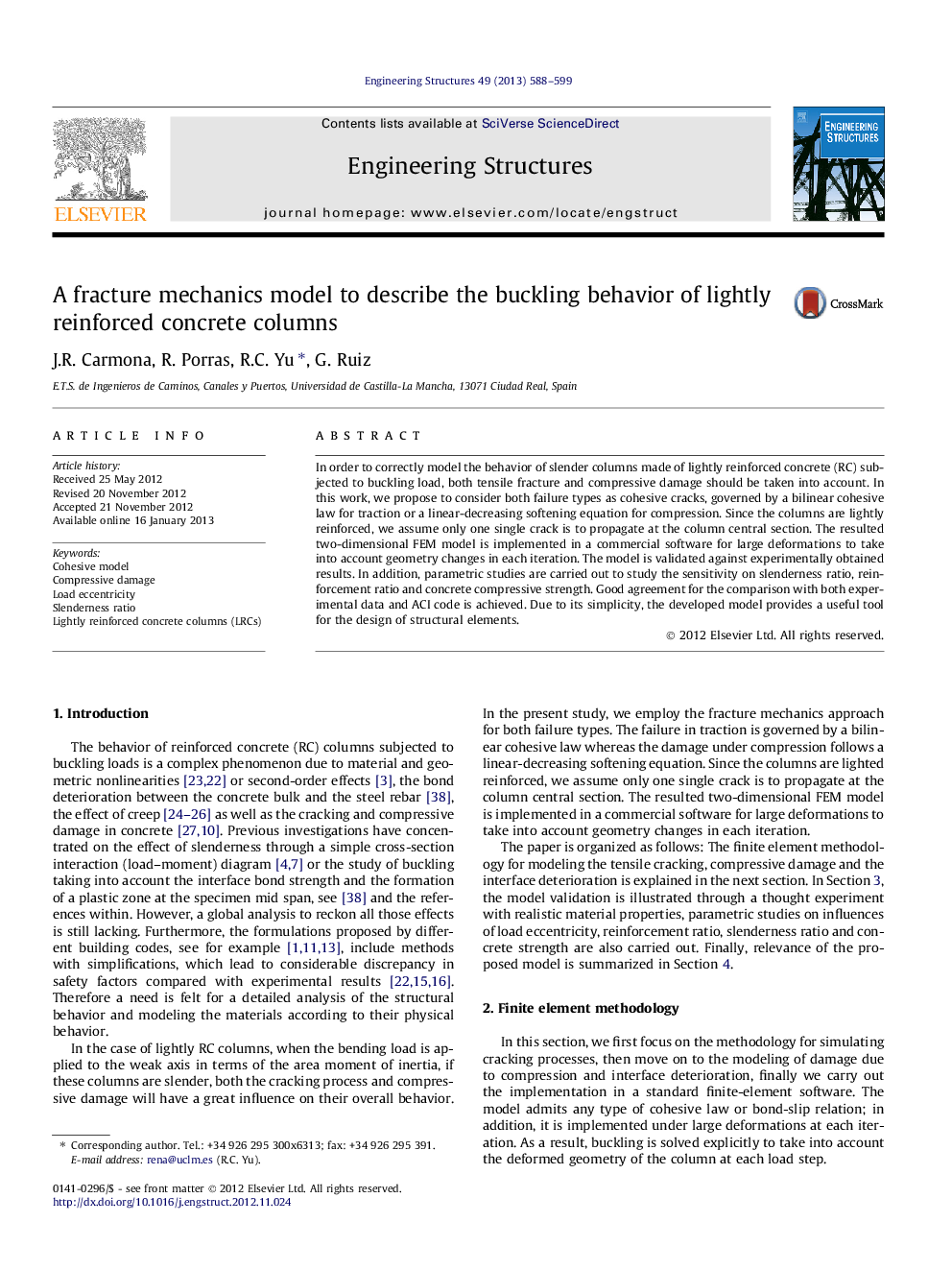| Article ID | Journal | Published Year | Pages | File Type |
|---|---|---|---|---|
| 267197 | Engineering Structures | 2013 | 12 Pages |
In order to correctly model the behavior of slender columns made of lightly reinforced concrete (RC) subjected to buckling load, both tensile fracture and compressive damage should be taken into account. In this work, we propose to consider both failure types as cohesive cracks, governed by a bilinear cohesive law for traction or a linear-decreasing softening equation for compression. Since the columns are lightly reinforced, we assume only one single crack is to propagate at the column central section. The resulted two-dimensional FEM model is implemented in a commercial software for large deformations to take into account geometry changes in each iteration. The model is validated against experimentally obtained results. In addition, parametric studies are carried out to study the sensitivity on slenderness ratio, reinforcement ratio and concrete compressive strength. Good agreement for the comparison with both experimental data and ACI code is achieved. Due to its simplicity, the developed model provides a useful tool for the design of structural elements.
► A fracture mechanics approach to model buckling. ► Compressive damage modeled as analogous fracture. ► Concrete-steel rebar interface modeled explicitly. ► Updated Lagrange framework for large deformation modeling. ► Easy to implement in commercial FEM softwares.
